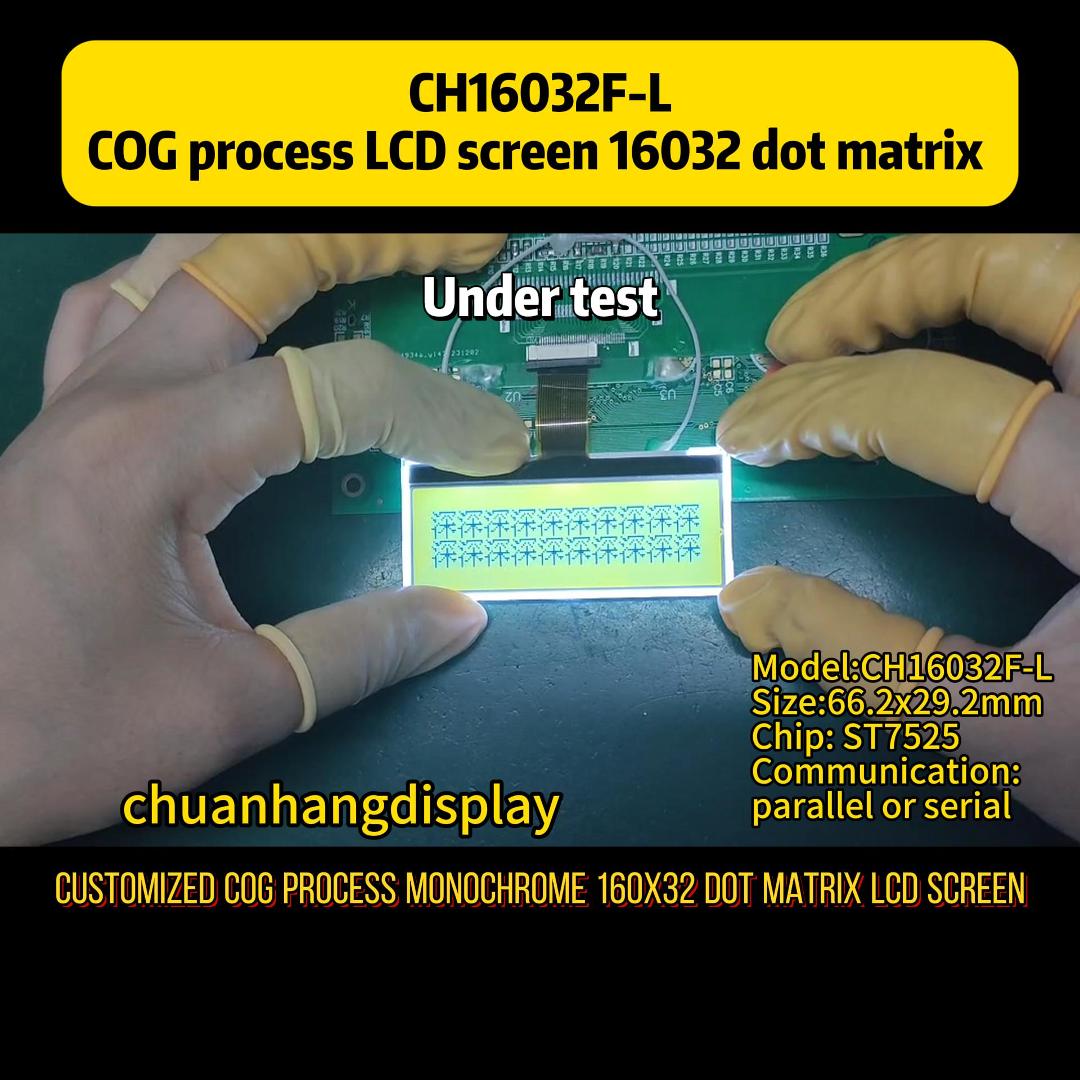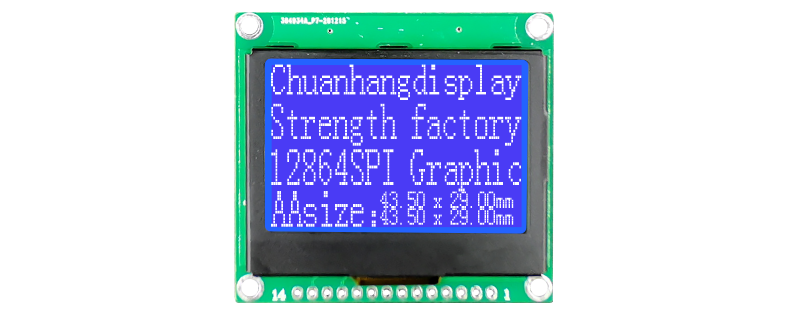The world of display technology is in a constant state of evolution, and at the forefront of this revolution are OLED screens. Renowned for their perfect blacks, high contrast ratios, and vibrant colors, these displays have moved far beyond consumer smartphones and TVs. They are now a critical component in demanding industrial environments, from factory control panels to medical imaging systems. But what goes into creating these robust Industrial OLED displays? This article delves into the intricate world of OLED screens manufacturing, exploring the advanced OLED screens manufacturing equipment required and addressing the common challenges that producers face.

Unlike their consumer-grade counterparts, Industrial OLED displays are engineered for endurance and reliability. They are built to perform flawlessly under conditions that would cripple a standard screen. Key advantages include:
Wide Operating Temperature Range: They function consistently in extreme cold or heat, essential for outdoor applications or unheated industrial facilities.
Superior Brightness and Readability: High nit ratings ensure clear visibility even under direct sunlight, crucial for HMI (Human-Machine Interface) panels.
Enhanced Durability: Built with stronger materials and often featuring hardened glass, they resist vibrations, shocks, and potential impacts on the factory floor.
Longevity and Stability: Industrial displays are designed for 24/7 operation, with a much longer lifespan and minimized risk of burn-in, a common concern with early OLED screens.
Customization Flexibility: Manufacturers like Chuanhang Display specialize in tailoring Industrial OLED displays to specific needs, including unique sizes, shapes, touch functionalities (resistive or capacitive), and interface compatibility.
The demand for these specialized OLED screens is driving significant investment in the manufacturing processes behind them.
Creating an OLED screen is a complex, multi-stage process that occurs in highly controlled cleanroom environments. The precision of the OLED screens manufacturing equipment directly determines the quality, yield, and performance of the final product. Here’s a breakdown of the key stages and the machinery involved:
1. Backplane Fabrication (TFT Array):
This is the foundation of the display. A thin-film transistor (TFT) array is deposited onto a glass or plastic substrate. This matrix of transistors will control each individual pixel. The critical OLED screens manufacturing equipment here includes:
Chemical Vapor Deposition (CVD) Systems: Used to deposit thin layers of semiconductor materials like silicon.
Sputtering Systems: These machines deposit metallic layers (e.g., for electrodes) onto the substrate.
Photolithography Systems: Perhaps the most precise step, this equipment uses light to etch intricate circuit patterns onto the substrate, defining the pixel layout.
2. OLED Deposition:
This is where the organic light-emitting layers are applied. There are two primary methods, each requiring specialized OLED screens manufacturing equipment:
Evaporation (Vacuum Thermal Evaporation - VTE): The most common method for high-end displays. Organic materials are heated in a high-vacuum chamber until they vaporize, then condense onto the cooled substrate, forming precise thin films. This requires massive, expensive vacuum chambers and shadow masks to pattern the red, green, and blue sub-pixels.
Inkjet Printing: An emerging, cost-effective technology for larger displays. Like a commercial printer, this equipment jets soluble OLED materials directly onto the substrate. It reduces material waste and is highly scalable, making it promising for the future of large Industrial OLED display production.
3. Encapsulation:
OLED materials are highly sensitive to oxygen and moisture. Any exposure leads to rapid degradation and dark spots. Therefore, a perfect hermetic seal is non-negotiable. The OLED screens manufacturing equipment for encapsulation includes:
Thin-Film Encapsulation (TFE) Systems: Deposits alternating layers of inorganic and organic films to create a flexible, ultra-high barrier.
Glass Frit Encapsulation Systems: Uses a laser to fuse a glass powder seal around the edges of the display, commonly used for rigid panels.
4. Assembly and Testing:
The finalized screen is bonded to the touch panel (if applicable), connected to the driver electronics, and integrated into its final housing. Automated optical inspection (AOI) equipment scans for defects like dead pixels or mura (uneven brightness), ensuring that only flawless Industrial OLED displays leave the factory.

Despite technological advancements, manufacturing high-quality OLED screens for industrial use presents several persistent challenges that impact cost and yield.
1. The Burn-in Phenomenon:
This remains the most cited concern for OLED screens. When static images are displayed for prolonged periods, the organic materials degrade unevenly, causing a ghostly afterimage. For an Industrial OLED display showing a fixed HMI layout for years, this is a critical issue.
Solutions: Manufacturers implement pixel-shifting algorithms, use organic materials with higher stability, and design displays with larger margins to distribute wear more evenly. Companies like Chuanhang Display address this by carefully selecting materials and integrating intelligent driving electronics to mitigate the risk.
2. Achieving High Yield Rates:
The manufacturing process is incredibly delicate. A single speck of dust can ruin an entire panel. The complexity of the OLED screens manufacturing equipment and the sensitivity of the materials mean that achieving a high yield (percentage of perfect panels per batch) is difficult. Low yields directly drive up the cost of the final product.
Solutions: Continuous improvement in cleanroom standards, more precise OLED screens manufacturing equipment, and advanced real-time defect detection systems are helping to push yields higher.
3. Moisture and Oxygen Sensitivity:
As mentioned, the vulnerability of OLED materials to environmental factors is a fundamental weakness. A imperfect seal during the encapsulation stage will lead to a shortened lifespan.
Solutions: The development of more robust Thin-Film Encapsulation (TFE) techniques is crucial. This is a key area of R&D for equipment suppliers and display makers alike, especially for flexible OLED screens.
4. Cost and Scalability:
The capital investment for state-of-the-art OLED screens manufacturing equipment is enormous, particularly for evaporation-based systems. This high barrier to entry can make Industrial OLED displays more expensive than other technologies like LCD.
Solutions: The industry is actively pursuing alternative deposition methods like inkjet printing, which promises lower material costs and easier scalability for larger screen sizes, potentially making high-performance OLED screens more accessible for industrial applications.
Navigating the complexities of OLED screens manufacturing requires a partner with expertise and a focus on quality. This is where specialized manufacturers like Chuanhang Display excel. Rather than just supplying a standard product, they work closely with clients to engineer Industrial OLED displays that meet specific operational challenges.
Chuanhang Display understands that an industrial display is more than just a panel; it's an integrated system. They focus on:
Customization: Offering tailored solutions for size, brightness, touch interface, and connectivity.
Reliability Engineering: Selecting high-grade materials and implementing stringent quality control processes to ensure longevity and performance in harsh conditions.
Technical Support: Providing expert guidance on integration and usage to maximize the lifespan and effectiveness of their OLED screens.
The journey of an OLED screen from raw materials to a reliable Industrial OLED display is a testament to modern engineering precision. While challenges like burn-in and manufacturing costs persist, ongoing innovations in OLED screens manufacturing equipment and material science are continuously pushing the boundaries. As the technology becomes more robust and cost-effective, we can expect to see OLED screens become even more pervasive in the industrial landscape, offering unparalleled visual clarity and reliability for the smart factories and advanced medical devices of tomorrow. Partnering with experienced manufacturers is key to leveraging the full potential of this transformative technology.